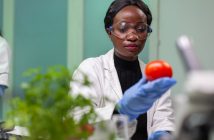Data scientist and physicist Ilan Dan-Gur writes about how he was able to find and pursue research topics that used his skills and have the potential to make a real-world impact.
Finding an interesting and worthwhile topic to investigate, and to apply all your education and passion toward, is an issue close to the heart of many scientists who do not have full-time employment. While searching platforms such as Kolabtree for projects that may benefit from your knowledge is an important option that may result in financial gains and the personal satisfaction of helping others, you may also feel a need to find your own research topics either as a way to start a business or to make a name for yourself and showcase your abilities.
However, there is a growing belief among scientists that finding interesting topics to investigate is more difficult now than ever as the body of scientific knowledge keeps growing. Paul Dirac famously said later in his life about the early days of quantum mechanics: “It was very easy in those days for any second-rate physicist to do first-rate work…It is very difficult now for a first-rate physicist to do second-rate work.” But if you are not looking to produce anything remotely so grandiose, you may be able to find opportunities if you dig into information and data about topics that are interesting to you even if you are working from home using only your computer and WiFi (along with your college education, passion to investigate, and perhaps the local public library). For example, you may be able to analyze existing data in a new way that no one had thought of (or at least no one had published about), or perhaps you will be able to add new data to the current collection.
My formal education is in physics and electro-optics, and while my own experience is obviously subjective I would like to offer four examples of topics that I was able to “single-handedly” (well, nothing in science truly is) think about and investigate from home (or many times a coffee shop), that required applying my scientific knowledge, had a reasonable chance of attracting public interest, and were exciting to do because they guaranteed to add something unique to the body of knowledge that had existed in the world.
1. Geographic cancer clusters in the U.S.
Large databases of U.S. public health records are freely available [1], courtesy of the U.S. government. In 2017, while browsing through cancer-rate data of different U.S. states, and doing basic online research using google, it occurred to me that no article had been published with a focus on shared borders between states with high cancer rates. Specifically, no article had been published that simply counted the number of shared borders between states with the highest cancer rates, even through the data to do such an analysis was readily available on the CDC website, and the investigation would have been straightforward and easy to do. Put differently, my intention was to take a large amount of data and “connect the dots” (i.e. organize) the data in a way that had never been done before, while intentionally ignoring the more complex question of whether such an analysis would be useful and to whom. I posted the investigation and the results on my website [2], as well as a secondary statistical analysis [3].
Further, while doing the analysis and looking at the data, I realized there was a need to coin and define a new term which was central to the analysis, a “shared-border ratio,” and that added excitement to the investigation.
2. Longevity in the U.S.
Similar to example 1 above, using statistical mortality data from the U.S., I came up with and investigated unique questions related to longevity [4].
3. Skin mole image database
While today there is a large selection of mobile apps to analyze skin moles for signs of cancer, long before smartphones apps became popular I was the first to offer the public a free advice on signs of skin cancer [5] in return for posting their mole images on my website. While my intention was to educate the public about signs of skin cancer, as well as to advertise a software I had written for performing the analysis (see example 4 below), the result of offering a free analysis was the largest online database of user-contributed skin mole images [6], which, as I later found out, was used (with proper accreditation to my company, Opticom Data Research) in a book published in 2015 [7, 8] discussing advancements in mathematics and statistics (unrelated to my own website and analysis).
4. Skin mole automated analysis
In 2001, after being told by various dermatologists I was at a high risk for skin cancer, and after having been through eight skin biopsies, I decided to write (and try to sell) a software for personal computers (which I wrote at the time using C++ [9], and more recently translated to JavaScript for free-use on web browsers [10, 11, 12]), that analyzed images of moles. Before smartphones and mobile apps became popular I was able to sell copies of the C++ software worldwide, along with a simple mechanical attachment that I designed to hold a camera close to the skin.
REFERENCES
- [1] https://wonder.cdc.gov/DataSets.html
- [2] http://opticomdataresearch.com/statistics/cancer/clusters/main.htm
- [3] http://opticomdataresearch.com/statistics/cancer/clusters/shared-borders-statistics.htm
- [4] http://opticomdataresearch.com/statistics/how-long-will-i-live.htm
- [5] https://www.prweb.com/releases/2008/07/prweb1060104.htm
- [6] http://opticomdataresearch.com/mobile/mole-on-skin.htm
- [7] Applications of Computer Algebra (Springer proceedings in mathematics and statistics, 2015)
- [8] https://books.google.ca/books?id=tW0uDwAAQBAJ&pg=PA184&dq=opticom+data+research
- [9] http://opticomdataresearch.com/molesense.htm
- [10] https://chrome.google.com/webstore/search/skin%20cancer
- [11] http://opticomdataresearch.com/mobile/skin-cancer-image-search.htm
- [12] http://www.opticomdataresearch.com/mobile/atypical-mole.htm







